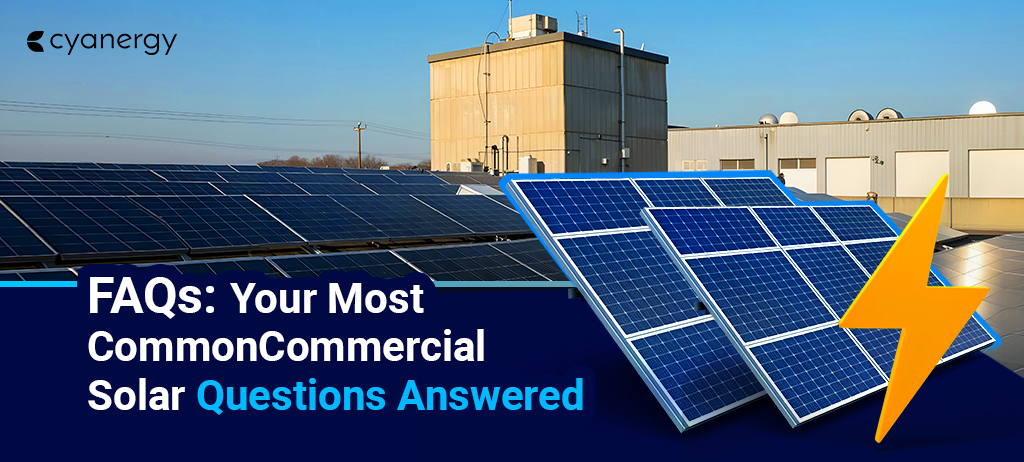2023 began with astonishing price hike in every sector imaginable, energy prices are not an exception. Businesses, especially small businesses are suffering as a result. This leads to many of them considering renewable power sources which is a sizable and smart investment decision towards saving a lot of money while reducing carbon footprint at the same time. So, what is commercial renewable energy in Australia and how can you take advantage of it? Learn all about it in the discussion below-
Renewable Energy Scenario in Australia
The main sources of renewable energy in Australia are hydroelectric power, wind, and solar. Hydroelectric power is the largest source of renewable energy in the country, accounting for around 60% of total renewable energy generation. Wind energy is the second-largest source, accounting for around 26% of total renewable energy generation. Solar energy is the third-largest source, accounting for around 14% of total renewable energy generation at the moment.
The use of commercial renewable energy has been on the rise in recent years as more and more businesses and organizations strive to reduce their carbon footprint and become more environmentally friendly. This shift towards renewable energy is driven by a number of factors, including increasing concerns about climate change, government incentives and regulations, and advancements in technology that have made renewable energy more cost-effective.
One of the most popular commercial renewable energy sources is solar energy. Solar panels, which convert sunlight into electricity, can be installed on rooftops or in other areas of a business’s property. This can provide a significant portion of the business’s energy needs, and any excess energy can be sold back to the grid. Also, solar energy takes the least amount of maintenance which makes it even more attractive to business owners.
As of 2021, renewable energy sources make up a significant portion of Australia’s commercial energy mix. According to the Australian Renewable Energy Agency (ARENA), around 21% of Australia’s commercial energy was generated from renewable sources in 2019. (Source)
The Government Wants to Help You Go Green
In recent years, the Australian government has been working to increase the share of renewable energy in the country’s energy mix. The government has set a target to achieve 33,000 gigawatt hours of renewable energy generation by 2020, and to achieve 50% renewable energy by 2030. However, the target was met in 2019 already and now the government is working towards an advanced goal.

There are several incentives and programs in place in Australia to promote the development and use of renewable energy. Some of the main incentives include:
- Renewable Energy Target (RET) – The RET is a federal government policy that aims to increase the amount of electricity generated from renewable sources in Australia. The RET sets a target for the amount of renewable energy that must be generated each year, and it provides financial incentives for businesses and organizations that generate renewable energy.
- Small-scale Renewable Energy Scheme (SRES) – The SRES provides financial incentives for households and small businesses that install small-scale renewable energy systems, such as solar panels and wind turbines. Under the SRES, eligible systems can earn small-scale technology certificates (STCs), which can be sold or traded to help offset the cost of the system.
- Australian Renewable Energy Agency (ARENA) – ARENA is a federal government agency that provides funding and support for renewable energy projects in Australia. ARENA supports a wide range of renewable energy technologies, including solar, wind, geothermal, hydroelectric, and bioenergy.
- Clean Energy Finance Corporation (CEFC) – The CEFC is a government-owned corporation that provides funding and financing for clean energy projects in Australia. The CEFC provides funding for a wide range of renewable energy technologies, including solar, wind, geothermal, hydroelectric, and bioenergy.
- State-based schemes – Some states and territories in Australia also have their own renewable energy incentives and targets. For example, Victoria has a target of 50% renewable energy by 2030, and offers grants and subsidies to support the development of renewable energy projects.
- Small-scale Technology Certificates (STCs): STCs are a form of financial incentive provided by the federal government through the Small-scale Renewable Energy Scheme (SRES). Businesses that install solar panels or other small-scale renewable energy systems can earn STCs, which can be sold or traded to offset the cost of the system. The number of STCs a business can earn will depend on the size of the solar panel system and the location of the business.
- Financing options: There are also private sector financing options available for businesses that want to invest in solar energy. For example, some banks and other financial institutions offer low-interest loans or leases for solar panel systems, which can help businesses to reduce the upfront costs of installing a solar panel system.
These incentives and programs have played a key role in the growth of renewable energy in Australia, and it’s expected that they will continue to support the development of renewable energy in the future. With the increasing concerns about climate change and the need to reduce greenhouse gas emissions, it is likely that more incentives and programs will be introduced to promote the use of renewable energy in Australia.
Incentives and rebates for solar energy might change over time, so it’s always a good idea to check with the relevant government agency or program to see what is presently offered and to receive the most accurate and up-to-date information. Additionally, it’s crucial to speak with a specialist like us to better understand the discounts and incentives offered and to confirm that the system qualifies for them.

Why Should You Adopt a Renewable Energy Source?
There are several reasons why businesses should consider using renewable energy-
Cost savings: The cost of renewable energy technologies, such as solar and wind power, has decreased significantly in recent years, making them more cost-competitive with traditional fossil fuels. Investing in renewable energy can help businesses to reduce their energy costs, and in some cases, even generate additional revenue through the sale of excess energy.
Environmental benefits: Renewable energy sources do not emit harmful pollutants or greenhouse gases, unlike fossil fuels, which contribute to climate change. Using renewable energy can help businesses to reduce their carbon footprint and meet emissions reduction targets.
Energy security: Renewable energy sources, such as solar and wind power, do not rely on finite resources, such as coal or natural gas. By using renewable energy, businesses can reduce their dependence on fossil fuels and become less vulnerable to price fluctuations and supply disruptions.
Brand reputation: Consumers and investors are becoming increasingly concerned about the environmental impact of business practices. Using renewable energy can help businesses to improve their reputation and attract customers and investors who are looking for environmentally-friendly products and services.
Government incentives: Many governments offer financial incentives and tax breaks for businesses that invest in renewable energy. These can help to offset the costs of installing renewable energy systems and make them more financially viable.
Compliance: Some countries have laws and regulations that require businesses to have a certain percentage of their energy coming from renewable sources. By using renewable energy, businesses can comply with these regulations and avoid penalties.
Statistics Prove You Should Go Green
According to the Australian Renewable Energy Agency (ARENA), as of 2021, the use of renewable energy by businesses in Australia has been increasing steadily.
Some statistics about the use of renewable energy by businesses in Australia include:
- The number of businesses with on-site renewable energy generation increased by 18% between 2017 and 2019
- Small and medium-sized businesses (SMEs) are increasingly adopting renewable energy, with around 30% of these businesses having on-site renewable energy generation in 2019.
- The use of solar energy by businesses is particularly prevalent, with around 45% of all businesses with on-site renewable energy generation using solar panels.
- The use of wind energy by businesses is also increasing, with around 15% of businesses with on-site renewable energy generation using wind turbines.
- The use of bioenergy by businesses is also increasing, with around 10% of businesses with on-site renewable energy generation using bioenergy.
- Renewable energy adoption is higher in some states and territories than others, with South Australia and the Australian Capital Territory having the highest proportion of renewable energy use.
In conclusion, commercial renewable energy is a crucial step towards reducing our dependence on fossil fuels, and it can help businesses to lower their energy costs and become more environmentally friendly. With the cost of renewable energy sources continuing to decrease, it is becoming increasingly viable for businesses of all sizes to invest in renewable energy.







